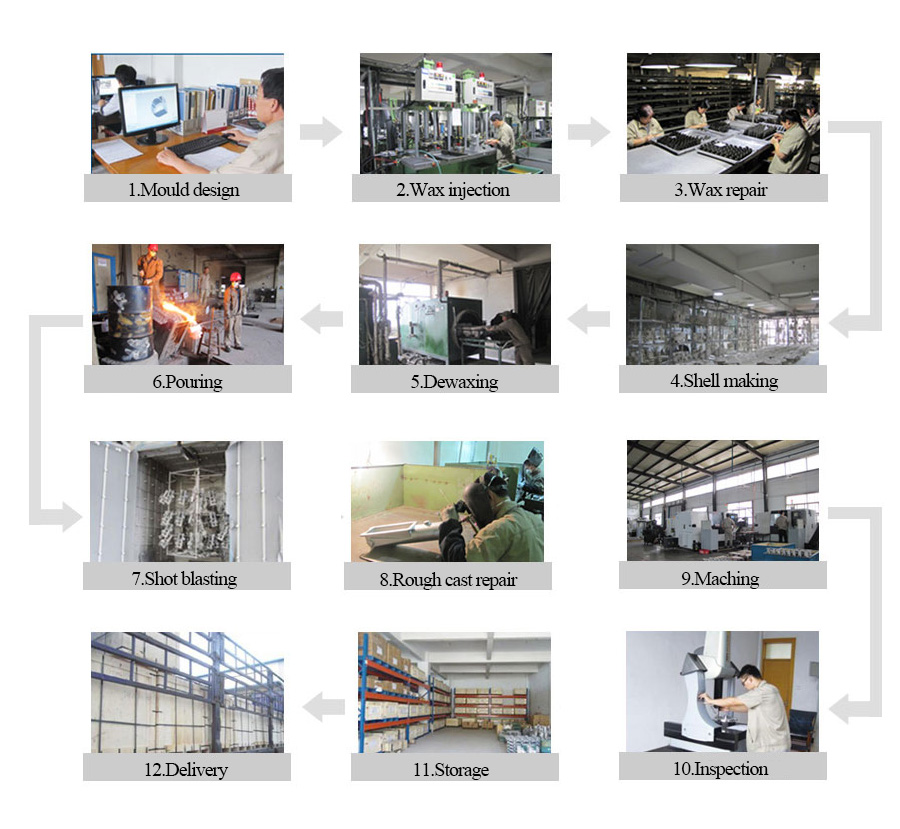Production process

In the manufacturing industry, investment casting (also known as lost-wax casting) is a critical process for aerospace, medical, and automotive applications due to its high precision, complex geometry capability, and excellent surface finish. As a professional investment casting foundry, we maintain strict control over each step from raw material to final product. This article details the complete production workflow of precision casting.
Using CAD/CAM 3D modeling and rapid prototyping (3D printed silicone molds or CNC machined metal dies), we create dies with±0.05mm to ensure wax pattern accuracy.
Key Techniques:
Reverse engineering for part replication
Mold flow analysis for optimal metal filling
Special casting wax is injected into dies under controlled temperature (60-80°C). Patterns are inspected via CMM (Coordinate Measuring Machine) and assembled manually for complex parts.
Quality Control:
Wax shrinkage compensation (0.8-1.2%)
Surface finish Ra≤1.6μm
Multi-layer ceramic shell construction:
Prime coat: Zircon flour + colloidal silica
Backup coats: Mullite sand + alumina silicate
Drying: Controlled humidity environment
Parameters:
Shell thickness: 5-12mm
Typical layers: 6-9
High-pressure steam autoclave dewaxing (15-30 mins) followed by high-temperature firing (900-1100°C) to remove residual wax and strengthen molds.
Alloys (stainless steel/aluminum/titanium) are melted in vacuum induction furnaces with precise pouring temperatures (e.g., 316L at 1500-1600°C).
Advanced Methods:
Directional solidification
Vacuum-assisted casting
Shell removal: Vibratory cleaning + sand blasting
Cutting: Band saw/laser cutting of gates
Heat treatment: Solution annealing, etc.
Machining: CNC milling/grinding
Dimensional inspection: CMM (CT8 tolerance)
NDT: X-ray, fluorescent penetrant testing
Material analysis: Spectrometer verification
✔ Complex thin-wall parts (min. 0.5mm thickness)
✔ CT4-CT8 dimensional accuracy
✔ 95% material utilization rate
Conclusion
This engineered process combines craftsmanship with metallurgical science, ideal for high-specification components. Contact us for custom casting solutions.
(Suggested: Add foundry tour video link or case studies with titles like "How We Cast Aircraft Turbine Blades")
Contact: Terry Zhang
Phone: +86-13515399527 (Whatsapp/wechat)
E-mail: zhang@senjiagroup.com
Add: No 106 Jinqueshan Road, Linyi, China